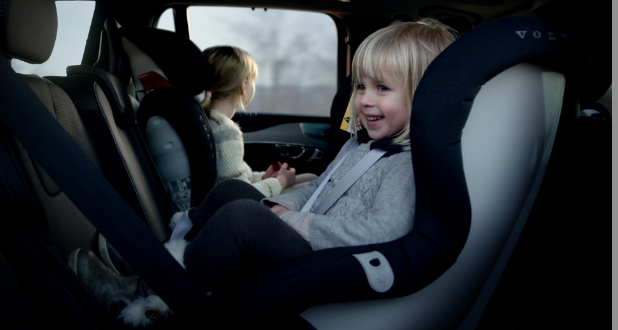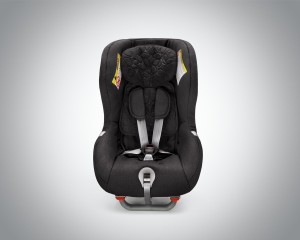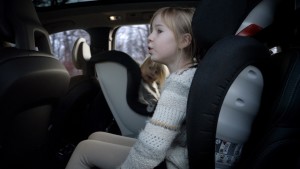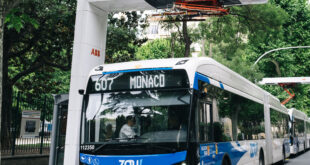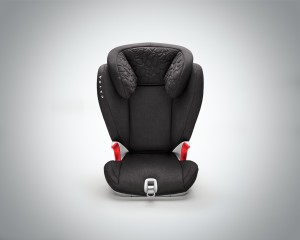
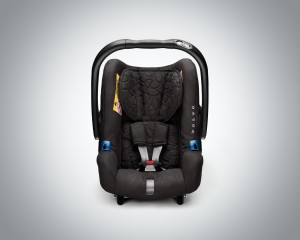
Volvo Car South Africa has thrown its weight behind the #CarseatFullstop campaign which seeks to enlighten and inspire parents, and ultimately help them to take better care in protecting their children in cars.
The partnership is to boost current effort to raise child safety awareness in South Africa.
One of the world’s leading road safety pioneers, Volvo Cars, which of course is one of the world’s road safety pioneering companies and has saved countless lives since inventing the patent-free three-point seat belt in 1959, has been testing child safety systems in crash tests since the early 1960s and today manufactures bespoke Volvo child seats.
“Our partnership with the #CarseatFullstop campaign forms part of our fundamental need to care for people,” Michelle Naudé, Marketing and Communications Director at Volvo Car South Africa, said in a statement obtained by AUTO REPORT AFRICA. “We recognise that South Africans need to be educated and equipped to protect their families as best they can. Without being properly restrained in certified, appropriate child seats, children are at risk whenever they are in a car.”
The campaign’s founder, Mandy Lee Miller, also elaborates: “Car passenger deaths are the fourth-leading cause of unnatural deaths in children in our country. Car seats reduce the risk of death in cars by 71 per cent for babies and 54 per cent for toddlers. Currently only 15 per cent of South African children in cars are restrained. These numbers are devastating to me!
“Volvo is known for making some of the safest cars in the world, and are the perfect partner for this campaign because their ethos is the same as ours.”
The core campaign goal is to spread awareness of, and draw attention to, the critical importance of appropriate child restraints. The call to action to the community at large is to share anything and everything created around the campaign to reach those people in their networks who don’t know any better. With 85 per cent of children not strapped in, there is certainly someone they know who does not properly restrain their children.
The campaign has also been designed to make an impact on those who do know about child safety in cars, but who may be making poor decisions in the way they install child seats or restrain their children.
Most parents don’t know that children should be rearward-facing until at least age four. They don’t know that, according to Volvo Cars, a child needs to be in a booster seat until they are at least 10. Or that seat belts are designed for people over 1.4 metres tall, and that for those shorter than 1.4 m, the seat belt becomes an additional danger unless supported appropriately with a booster seat.
At 40 km/h, the blow to an unrestrained child’s head making contact with any part of the car is the same as dropping them from 6 meters onto concrete – a third storey balcony. Similarly, a child’s weight is multiplied exponentially during an impact, depending on the speed. A 15 kg toddler could weigh as much as a grand piano during an impact at just 30 km/h – a seemingly unfathomable concept.
New-generation Volvo child seats
“We understand that many people find child safety in cars a complex and sometimes confusing subject. We have focused for many years on communicating clear guidelines around how child seats should be used and the correct way to install them,”
Lotta Jakobsson, Adjunct Professor, and Senior Technical Leader, Injury Prevention at Volvo Cars Safety Centre, said.
“We believe that children will be more comfortable in our new rearward-facing seats and that this will encourage parents to keep their children rearward-facing for longer. This will have a direct impact on overall child safety and supports Vision 2020, where no-one will be killed or seriously injured in a Volvo car by the year 2020.”
Teaching adults how to install and operate a child seat is one thing, getting the child to stay in the seat is entirely another – especially when the child gets older. The tendency to fidget and the will to get out of an uncomfortable child seat are hindrances to child safety – so the comfort of the child seat is as important as the safety thereof.
Announced earlier in 2016 and available through the Volvo Cars dealer network in South Africa, Volvo’s new-generation child seats are made with a more breathable and comfortable upholstery comprised of 80% wool textile which makes the seats smoother to the touch, highly durable, and better-performing in both hot and cold climates. The seats also have a slimmer design aimed at increasing legroom and overall comfort.
The new Volvo child seats are designed to suit the needs of children of different ages and sizes:
- Infant seat – rearward-facing (up to 13 kg or 1 year)
- Child seat – rearward-facing for children from 9 months up to 6 years (at least 3-4 years as recommended by Volvo)
- Booster seat – forward-facing for children that have outgrown the rearward-facing seat (from 3-10 years old)
Volvo Cars said it continues to focus on the importance of children travelling in rearward-facing seats as long as possible.
 ..:: AUTO REPORT AFRICA ::..
..:: AUTO REPORT AFRICA ::..
